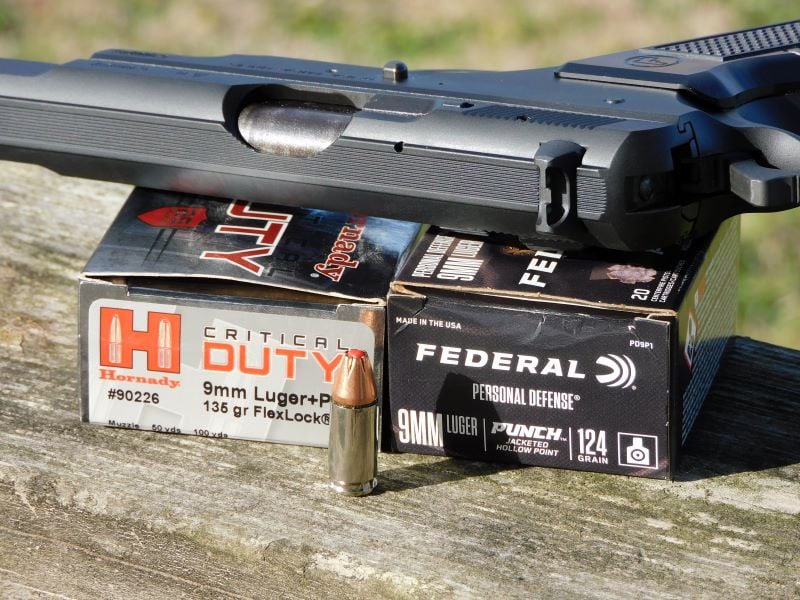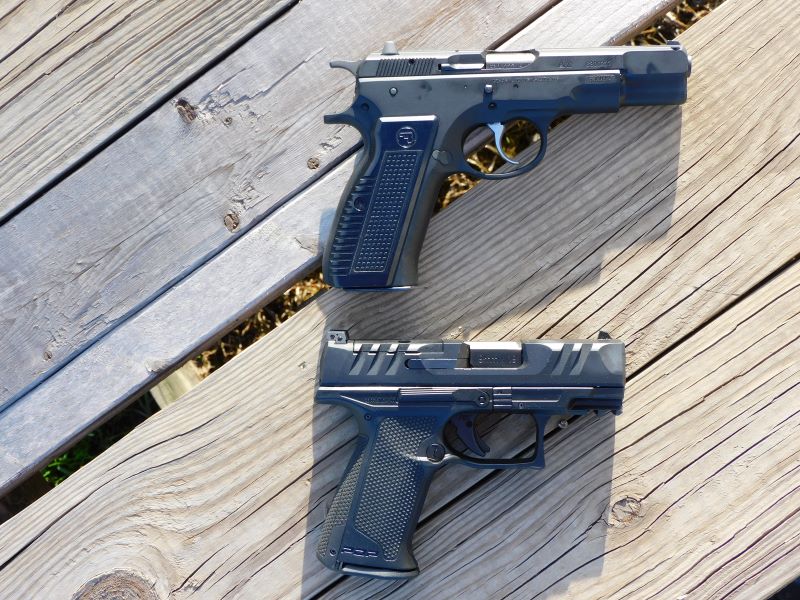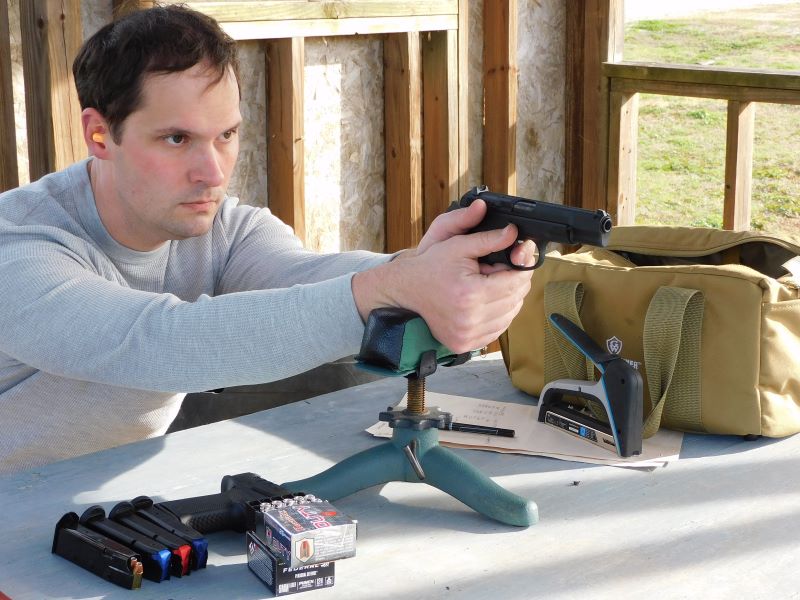The old axiom goes that the longer your firearm’s barrel, the faster the projectile coming out of the muzzle will be. The first primitive chronograph was utilized by the French in 1804, but well before that, it was understood that longer barrels translated to greater range and a greater impact on a target.
Those were the days of black powder and modern testing has confirmed that barrel length does increase velocity. But this is offset by a reduction in handling. Furthermore, velocity increases inverted once powder charges grow large enough. In other words, over a certain point, more powder resulted in less velocity as it was not burned up on combustion. This also affected accuracy and the search for an optimal load was on.
Today, the axiom still holds. Barrel length equals a greater velocity, which will yield more power. But so does the diminishing returns. Even among firearms of the same barrel lengths, results may vary. Some guns bleed off velocity by design. Some cartridges are more efficient than others.
In this overview, we will look at how the rule of thumb is not as true as you might think with the most popular pistol cartridge on the market, the 9mm Luger.

A Brief Overview of 9mm Luger Ammo
The 9mm Luger cartridge was developed in 1901 by George Luger for the Luger automatic pistol. After the Second World War, it became the standard pistol and submachine gun cartridge of the NATO block. The 9mm cartridge became more popular in the United States with the advent of higher-capacity Wonder Nine pistols in the 1970s and has since only grown in popularity.
The 9mm cartridge is universally popular, and all major pistol manufacturers chamber the lion’s share of their handguns for the round. There is also a wide array of ammunition and potentially confusing designations. 9mm NATO is NATO’s accepted version of the 9mm round with a service pressure of 36,300 psi, whereas standard 9mm ammunition runs at 35,000. On the civilian market, complaints about the performance of 9mm hollow-point ammunition led to the development of +P ammunition in the 1990s. These have a nominal pressure rating of 38,000 psi. Later, +P+ ammunition upped that to 42,000.
These higher-pressure rounds are loaded hotter than standard ammunition to achieve higher velocities. NATO wanted to achieve as much as it could out of non-expanding full metal jacket ammunition and ensure that the round would run in the gamut of firearms their partners fielded. +P and +P+ ammunition were intended to increase velocity to improve hollow point expansion and performance.
Initially, these rounds were intended for use in full-sized service pistols with 4.5-inch or greater barrel lengths. On the commercial market, compact and micro-compact handguns with 3–4-inch barrels are more popular, particularly for concealed carry. But with the decrease in barrel length, how much are you giving up in performance?
9mm Luger: The Chronograph Talks

I set up my chronograph 10 feet from my shooting rest, benched both pistols, fired five-round groups from both handguns and averaged the results. To begin, I opted for the Pabst Blue Ribbon of 9mm ammunition: Winchester White Box. I shot both the 115-grain FMJ and the 115-grain HP, followed by Federal Punch 124-grain HPs before moving to Hornady Critical Duty 124-grain and 135-grain +P. Then, I repeated the exercise with Winchester Target 124-grain 9mm NATO and finally, Buffalo Bore 124 grain +P+ HP.
| Ammunition | Velocity (3.5-inch barrel) | Velocity (4.6-inch barrel) |
| Winchester 115-grain FMJ | 1,202 | 1,235 |
| Winchester 115-grain JHP | 1,127 | 1,183 |
| Federal Punch 124-grain JHP | 1,145 | 1,194 |
| Hornady CD 124-grain +P | 1,149 | 1,202 |
| Hornady CD 135-grain +P | 1,090 | 1,114 |
| Winchester 124-grain NATO | 1,164 | 1,256 |
| Buffalo Bore 124 grain +P+ | 1,239 | 1,324 |
With the standard pressure loads, the difference between the two pistols in terms of velocity was neck and neck, with the difference between the Winchester 115 grain FMJ and Federal Punch being small enough to be the difference between one round to the next on a string of shots. The Winchester 115-grain hollow-point expanded the variation a bit more. The CZ-75 mustered an average velocity of 1,183 feet per second, while the PDP managed 1,127 feet per second—a difference of 56 feet per second.
Movin’ On Up: Civilian vs Government
The results got more interesting the higher up the food chain I went. The Hornady Critical Duty 124-grain load is marketed as a +P round intended for duty use and personal protection. While I did feel more concussion from firing this round compared to standard loads, there was no measurable increase in velocity. Indeed, with the CZ-75 this load was only faster by 18 feet per second. The 135-grain +P load is an atypical bullet weight for 9mm and we would expect it to be traveling a bit slower than its 124-grain counterpart—which it did.
But that reduction is balanced by its heavier bullet. It traveled out of the PDP at an average velocity of 1,090 feet per second for 356 foot-pounds of energy, only 24 feet per second slower than the full-sized CZ. The lighter standard pressure Punch load was going 1,145 feet per second from the shorter barrel, but it yielded 363 foot-pounds of energy.
The NATO load is loaded hotter than 9mm Luger standard pressure loads, but it was more pleasant to shoot than the +P rounds. With the NATO load, the difference in barrel lengths finally starts to widen. With the PDP, this 124-grain ammunition averaged 1,164 feet per second—quite close to the 124-grain +P load. The CZ launched these rounds at 1,256 feet per second. That is a difference of 92 feet per second and beyond the margins previously seen.
Does it really matter?
At velocities this low, differences like this can matter. That margin shrank slightly with the Buffalo Bore +P+ 124 grain HP. This load was the most powerful and produced the most recoil and blast, but it produced the highest velocities by far of all the other loads. The difference between the 3.5-inch PDP and the 4.6-inch CZ-75 was 85 feet per second. The difference is noticeable, but I expected the full-sized pistol to perform better, especially with the hotter loads like these.

So, does barrel length affect performance?
From this limited test, we can objectively infer that the difference between compact and full-sized 9mm pistols in terms of performance is deceptively small with standard pressure and at least some +P loads. We can also see that some +P ammunition performs at a dead heat with standard ammunition, and it comes at the costs of added pressure, greater blast, and greater wear on the pistol in the long run.
Subjectively, however, the added blast of the +P ammunition comes from wasted powder catching aflame outside the barrel, suggesting that this ammunition and some others might be better suited for a short-barreled PCC rather than a handgun. But depending on the load, the gap between compact and full-size pistols can widen, as we saw with NATO and +P+ ammo. But, if you were like me and wondered if 9mm would become underpowered when stepping down to a small handgun, rest assured that it is not. While the axiom of more barrel length equaling more velocity technically holds true, sometimes it is simply not enough to matter.

